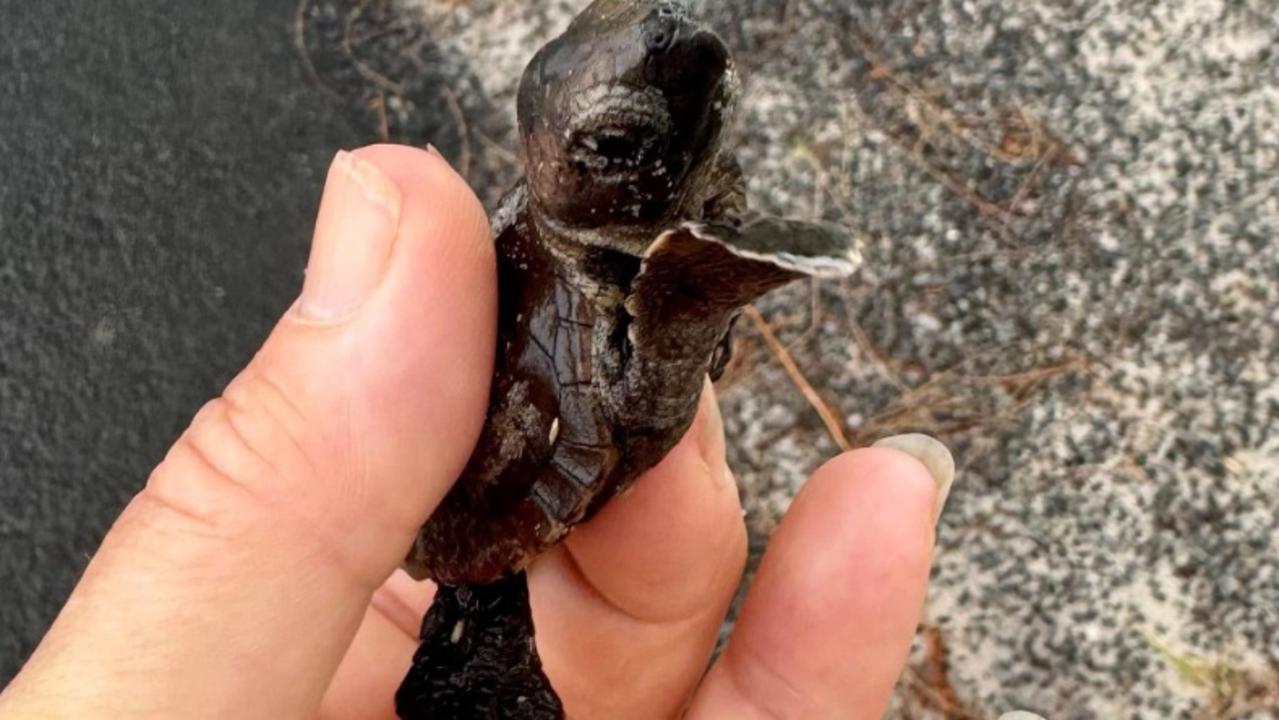Deadly paralysis ticks swarm southeast Queensland, vets warn pet owners
Veterinarians are warning pet owners of a huge surge in cases of the dangerous parasite in the state’s southeast as humid conditions provide perfect breeding grounds.

Pets and Wildlife
Don't miss out on the headlines from Pets and Wildlife. Followed categories will be added to My News.
Deadly ticks are on the rise in Queensland with veterinarians reporting a dramatic surge in cases along the southeast coast.
Greencross Vets regional clinical director Dr Adam Jeffrey has urged pet owners to be on high alert for paralysis ticks as La Nina weather conditions create perfect breeding grounds for the dangerous parasite.
“Tick paralysis is a progressive disease and has the potential to be fatal for dogs and cats,” he said.
“We’re seeing an increasing number of cases in clinics and we’re urging pet parents to regularly treat their pets with preventive medicines.”
Dog mum Cassandra Kirkland knows the dangers of ticks all too well after her border collie Zoe had a close call two years ago.

Ms Kirkland found a paralysis tick behind Zoe’s ear after taking her on a walk near dense bushland at Fig Tree Pocket.
“She had no symptoms at all. We felt something hard and then saw something sticking out behind her ear, it kind of looked like plastic,” she said.
“We were going to remove it ourselves but the internet said not to, so we went to the vet where it was revealed another one was in her eyebrow above her eye.
“The vet said within the next 48 hours if we didn't notice it she would have started to loose her back legs, that’s one of the first signs, limbs starting to give way and vomiting.”
Ms Kirkland was given two options – remove the tick or remove the tick and any existing toxins, which would require Zoe to be fully shaved and stay in hospital overnight.
“$3500 later we had a fat, shaved border collie,” she said.

“She recovered OKand wore a big bucket (cone) on her head for two or three weeks.
“Now we make sure to keep up to date with her tick medication.”
Ticks belong to the arachnid family and suck blood from their victims, secreting a paralysing toxin as they feed.
Dr Jeffrey said those living near or visiting bushy coastal areas must be vigilant in ensuring their pets – mainly dogs and cats – were up to date on prevention medication and to regularly checked their skin for any lumps or bumps.

“Most ticks will be found around the head, neck and shoulders, sometimes ticks around the anal area,” he said.
“Ticks can be small to start with but once engorged (after sucking blood) they are larger and easier to feel so ensure you check any small bumps right down to the skin … don’t stop the search until you have examined the whole body.
“If you think your pet may have ticks, then book an appointment at your nearest vet immediately.”
Preventive tick medication comes in many forms including tablets, chewables and spot-on applications and can be found at local pet stores or some supermarket outlets.
To find your closest 24-hour emergency vet centre visit greencrossvets.com.au/emergency-care
Compare the Market pet insurance general manager Adrian Taylor’s tick tips:
1. Prevention
“Use an effective tick-prevention product on your pet all year round,” Mr Taylor said.
Products that at once repel and also kill ticks before they get a chance to sink their teeth into your pet will also help prevent tick-borne diseases such as anaplasmosis and babesiosis.
“If possible, keep your animals indoors (especially cats), and if you do need to let them out for a walk or some fresh air, keep them away from overgrown scrub and greenery, as these are hot spots for ticks.”
2. Checking
“Run your hands over your pet’s torso regularly, but especially in hard-to-reach places like between their toes, behind their ears, or even along their gums,” Mr Taylor said.
“Early detection will give your pet the greatest chance of surviving once a tick has buried its way into your pet’s flesh.”




